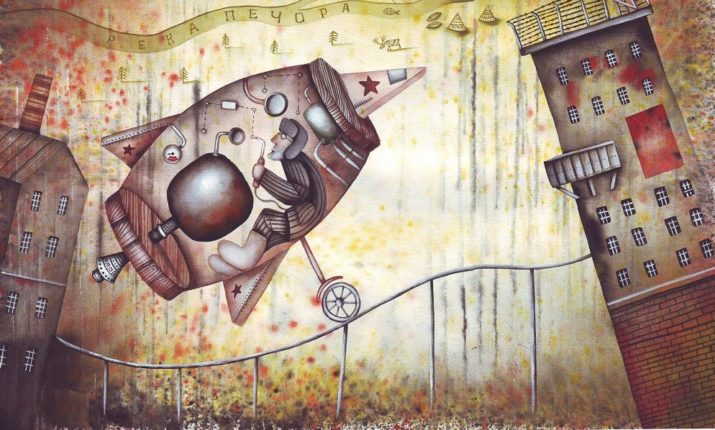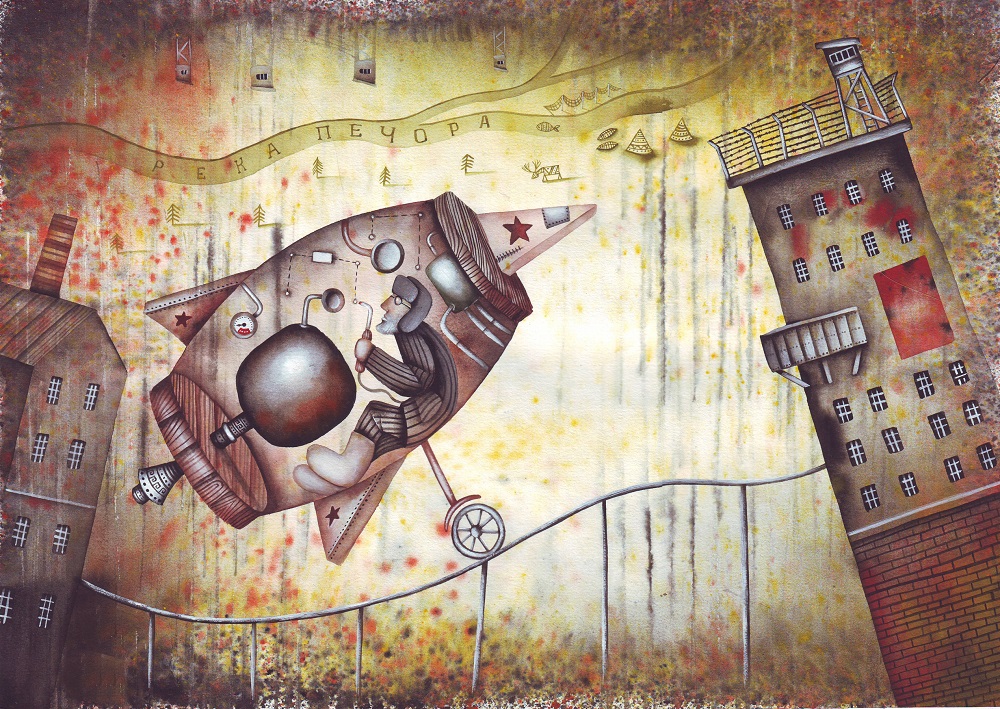

This is part of our special feature, Diversity, Security, Mobility: Challenges for Eastern Europe.
Russia is an exceptionally vast and heterogeneous country with high levels of ethnic, linguistic, and religious diversity, and a complex federal structure. The Russian empire already saw an intermingling of peoples, encompassing Slavic, Scandinavian, and Asiatic groups, with various forms of hybridization, multilingualism, and cultural cross-fertilization. Internal migration meant that not only non-Russians were Russified, but that Russians absorbed a range of cultural influences (Etkind 2013). The Soviet Union saw a departure from this fluidity: ethnic groups were classified, and individuals placed in exclusive ethnic categories, while federal units were nominally attributed to the main ethnic groups (known as “titular nationalities”) through a system of ethno-territorial federalism. Thus, Soviet practices effectively embedded ethnicity in the very fabric of society, its classifications and institutions (Brubaker 1994). What is particularly relevant to this essay is that, while ethnicity played a crucial role in shaping social structures and hierarchies, one of the pillars of Soviet ideology was equality of different nations and nationalities. All were declared to have equal dignity, enjoying a right to “free national development” within the USSR, described as a “federation of peoples equal in rights” [italics added] (Preamble, 1924 Soviet Constitution). Among countless similar references we can also cite the 1977 Soviet Constitution, stating that: “It is the duty of every citizen […] to respect the national dignity of other citizens, and to strengthen friendship of the nations” [italics added] (Art. 64).
It goes without saying that, in the Soviet Union, reality differed from its ideological underpinnings. In fact, there were often glaring divergences from official rhetoric, with equality closer to a myth than a lived reality. Narratives of “friendship of peoples” and their “development,” in their vagueness, have had little practical application both in authoritarian (Soviet) and hybrid (Russian Federation) systems. At the same time, in Russia the idea of mutual respect and equal worth of peoples still resonates with many persons belonging to national minorities. That is, despite the entrenchment of social inequality, under Putin narratives revolving around a myth of equality of nationalities have been consolidated. Moreover, notions of equality intersect with a drive for national unity as a vehicle to stability and security – yet this approach is accompanied by a perception of equality as “sameness,” and the conflation of national unity with the elimination of difference.
Reality and Myth
Soviet narratives, including the myth of equality, were challenged in the Soviet period’s last phase, when ideology’s clash with reality became an irrefutable contradiction. A tension had resulted from simultaneously promoting the “flourishing” of peoples (their “cultural development”) and their “drawing together” to form a cohesive Soviet citizenry. Indeed, national unity constituted another core tenet of the Soviet doctrine, which came to occupy an increasingly prominent role. Thus, for example, the 1977 Soviet Constitution placed a greater emphasis on the unitary state compared to the previous (1936) Constitution: the Soviet narod is referred to, in 1977, as akin to an integral nation, without distinctions between nationalities (Shtromas 1978). The 1977 Constitution’s preamble refers to strength through unity, which, among other things, was linked to the victory in the Second World War (known as the “the Great Patriotic War”).
Thus, in practice, the “merging” of peoples took priority over the “flourishing” of distinct groups. Kemp (1999) refers to a growing chasm between nationalism and communism in the Soviet Union: what was ‘national in form’ could not easily be separated from what was “socialist in content.” This tension, combined with the liberalization of the perestroika and Yeltsin years, led to a period of intense ethnic mobilization. The challenge to the myth of equality was, however, short-lived. De-centralization under Yeltsin caused state fragility and ineffective administration; additional problems were a difficult transition to a market economy, economic instability and the rise of the oligarchs. In contrast to Yeltsin, in the 2000s, Putin pursued a policy of political centralization through the strengthening of the state, which coincided with a dwindling of ethnic mobilization. The myth of equality was also re-constructed under Putin, despite the fact that inequality, discrimination, and xenophobic attitudes have continued to affect the daily lives of individuals belonging to national minorities.
In 2015, the UN Human Rights Committee (HRC) expressed concern at “manifestations of Islamophobia and anti-Semitism as well as other racist and xenophobic acts” (HRC 2015). The HRC also noted “the use of discriminatory language” against minorities, and “xenophobic and racist rhetoric in the political discourse, in particular during electoral campaigns, and in the media” (HRC 2015, §8). Riots and mass disturbances have been triggered by inter-ethnic tensions. There have been cases of gang attacks on ethnic minorities by Russian nationalists: for example, a mass fight in the night of 14-15 October 2015 in St. Petersburg, and a large riot on 13 October 2013 in Moscow’s district of Biryulevo. The latter followed the murder of an ethnic Russian, which an ethnic Azerbaijani was suspected of having committed (Baczynska and Belyatski 2013). Hate-motivated crime against ethnic minorities, in some cases leading to the death of victims, are widely documented (see, for example, the monitoring of the SOVA Center for Information and Analysis, SOVA 2017). Those who have been particularly affected are persons of “non-Slavic appearance” – mostly originating from the Caucasus and Central Asia (ACFC 2013; SOVA 2017). Persons belonging to these minorities also experience routine discrimination in employment and housing (ACFC, 2013 §43): announcements for flats for rental have been accompanied by statements “only for Russians” or “only for Slavs” (MRG 2014: p.8). With reference to the right to “cultural development” and minority language use, the spaces available to national minorities have continued to shrink.
Despite this, the myth of equality has been embraced by a number of persons belonging to national minorities. This is shown by interviews carried out in Russia under the project “National Minority Rights and Democratic Political Community: Practices of Non-Territorial Autonomy in Contemporary Central and Eastern Europe” (2014-2017), implemented by the University of Glasgow. Semi-structured, in-depth interviews took place in 2015 and 2016 in six cities, located in four ethnic republics – Saransk (Mordovia), Petrozavodsk (Karelia), Kazan (Tatarstan) and Ufa (Bashkortostan) – as well as in Moscow and St Petersburg. In total 76 persons were interviewed, from minority organisations (particularly National Cultural Autonomies – NCAs), minority NGOs, as well as academics and public officials. NCAs are minority representative institutions, primarily focusing on cultural matters, that have been established at the local, regional and federal level, in line with the 1996 Law on National Cultural Autonomy (NCA Law).
Many respondents from minority institutions (especially NCAs) alluded to the intrinsic worth of all ethnic groups, with many (although by no means all) noting how equal worth and dignity had been recognised in Russia. Particularly significant for these respondents was the respect for their culture and traditions by other minorities and the Russian majority. An appreciation of the recognition and respect of minority institutions on the part state officials was often present even among respondents who were otherwise critical of Russia’s system of diversity management. Referring to Russian history, respondents noted the attention that has been placed on minority languages and cultures in both the Soviet (Martin 2001) and post-Soviet periods. The holding of cultural events such as inter-ethnic festivals – and the state’s support of them – were considered by many as an acknowledgement of minority cultures’ integral place in Russian society. Some pointed to cultural institutions such as national theatres, which were established and financed by the state to a degree, according to some respondents, greater than in “the West.” Moreover, numerous advisory councils on inter-ethnic relations exist at various levels of government, which provide access to high-ranking public officials, and at whose apex is the Presidential Council on Interethnic Relations. A respondent referred to high-profile official meetings between Putin and the leaders of the main confessional groups: while this may be seen as primarily symbolic, it promoted the visibility of non-Russian, non-Orthodox groups, and therefore their ‘recognition’ as constituent units of society.
Equality as Uniformity
The reason why these narratives continue to resonate among minorities – even in the presence of structural inequalities – is linked to particular perceptions of equality as uniformity (itself bounded up with national unity, as will be seen below). The government position has been to treat equality as sameness. For example, in 2004, in a case concerning the Republic of Tatarstan, the Russian Constitutional Court ruled that, on the one hand, Tatarstan could legitimately require that Tatar and Russian languages be studied ‘in equal measure’ in schools located within the republic (RCC 2004). On the other hand, the federal centre retained the authority to formulate all language policies; the Court added that different educational requirements for the study of Russian in different regions could lead to ‘negative consequences in relation to the continuity of learning in a single federal educational environment’, which was itself linked to equality in upholding the right to education. In another case considered by the Russian Supreme Court, the study of Russian was similarly associated with the pre-emption of violations of the principle of equality, and to equal opportunities in higher education and professional life (RSC 2009). This position is echoed in a statement by the Russian authorities motivating the refusal to allow pre-school education in the Republic of Karelia to take place exclusively in the Karelian language. The nurseries in question were said to be responsible for creating a “closed language environment within the frames of pre-school institutions […]. In [the] multinational environment of Russia this would significantly reduce their socialization opportunities and, accordingly, would entail [a] violation of the principle of equal opportunities of education, further employment etc. […]” [italics added]. (ACFC 2010, pp.103-4).
These statements reflect a reliance on formal equality, in the sense that all persons are treated in the same manner. The ‘equality-as-sameness’ approach diverges from an approach which foresees special measures in order to ensure equal opportunities even in the presence of cultural and linguistic differences (substantive equality). The latter position is reflected, for example, in the 1995 Framework Convention for the Protection of National Minorities, ratified by Russia in 1998: while upholding the principle of integration of minority groups into the broader society, the Convention also envisages measures to promote “full and effective equality between persons belonging to a national minority and those belonging to the majority” (Art. 4(2)). Similarly, Kymlicka (2007) has argued for the promotion of “group-differentiated rights” – tailored measures that can advance groups’ genuine equality; while this could be considered unjust (with some groups receiving more resources and support than others), the aim would be to create the conditions for substantive equality. In line with this approach, the 1966 UN International Convention on the Elimination of All Forms of Racial Discrimination (which the Soviet Union ratified as long ago as 1969), provides for “special measures taken for the sole purpose of securing adequate advancement of certain racial or ethnic groups or individuals requiring such protection as may be necessary in order to ensure such groups or individuals equal enjoyment or exercise of human rights and fundamental freedoms […]” [italics added] (Art. 1(4)).
Conversely, an approach based on formal equality advances a tendency towards uniformity. In this context, Putin’s programme of political recentralisation has also affected national minority interests in the regions. The growing subordination of the regions to the centre (Goode 2010; Ross 2010) – despite constitutional provisions for the sharing of competences – has been accompanied by a movement towards the increased role of the Russian language and marginalization of minority languages and cultures. This has taken place, for example, through changes to federal legislation on the use of minority languages in education at the regional level (Prina 2016). Zamyatin (2014) suggests that laws adopted in the 1990s in ethnic republics, proclaiming titular languages as having equal status to Russian within these regions, were never intended to by truly implemented, but rather to have a symbolic function. These laws’ declarative nature contributed to sustaining a myth of (formal) equality, while however adding little to advance forms of substantive equality.
Uniformity for Unity, Unity for Security
Uniformity, and the state’s management of diversity, is predominantly justified on the basis of unity, with a view to promoting national security. Threats to the social order include those posed by the presence in the country of ultra-right, ultra-nationalist groups, highly unstable and volatile regions (the North Caucasus), as well as a potential for Islamic radicalisation. These concerns have led to a securitization of inter-ethnic relations. Igor Barinov, a former military and FSB officer who heads the Federal Agency for Nationalities Affairs – a state institution established in March 2015 – has said that priorities in the sphere of inter-ethnic relations in Russia are radical Islam, extremism and hate crime (Natsionalnyi Aktsent 2015).
Putin’s strengthening of the federal centre can be situated in this securitised context. The role of minority institutions in socio-political processes, already largely ceremonial, has been further eroded. Their activities have primarily revolved around cultural programmes (innocuous expression of diversity through folklore, festivals and language classes), with little or no expectation of participation in shaping public policy (including policy-making on cultural and linguistic matters). Such apolitical activity allows the pre-emption of interventions that may be seen as destabilising. On the contrary, minority institutions are called upon to assist with the management of potential inter-ethnic tensions, particularly by aiding the integration of recent migrants: the NCA Law, following 2014 amendments, states that NCAs’ functions include “the strengthening of the unity of the civic Russian nation [rossiiskaya natsiya] […] and the realisation of activities directed at the social and cultural adaptation and integration of migrants” (Art. 1). Those persons belonging to minorities who wish to be regarded as loyal citizens refrain from engaging in activities that may be linked to extremism – with extremism being interpreted in an extremely broad way. For example, a Tatar nationalist who robustly criticised Russia’s annexation of Crimea, Rafis Kashapov, was sentenced to three years’ imprisonment for incitement of ethnic hatred and separatism (RFE/RL 2015). There have also been heated controversies over been past calls for the use of the Latin alphabet (rather than Cyrillic) for the Tatar language within Tatarstan, considered by many as destabilizing.
Respondents made frequent references to the fact that, overall, safety and social order have been enabled by Russia’s conscious effort towards harmonious inter-ethnic relations. The (largely state-controlled) broadcast media has significantly contributed to keeping the myth of equality, and of inter-ethnic harmony, alive. While there have been some fluctuations in the line taken by state-controlled television over the years, the Russian government has striven to legitimise its system for diversity management through the media, including by depicting it as superior to ‘Western’ forms of multiculturalism. Inter-ethnic issues have also been used in an instrumental fashion, effectively exploiting fears of inter-ethnic conflict: during his third presidential election campaign in the first half of 2012, Putin was presented as guarantor of inter-ethnic harmony (Hutchings and Tolz 2015).
The respondents’ own narratives often reflected such official (and mediated) discourses. Respondents linked inter-ethnic harmony to respect of nationalities and feelings of equal worth, which could transcend inter-ethnic tensions, and promote the inter-cultural understanding often seen to be wanting in “the West.” In line with this, Russia’s positioning vis-à-vis the West provide another piece of the puzzle in explaining the reasons for the perpetuation of the myth of equality. Russia’s ‘way’ of accommodating diversity has been linked by Putin to resistance to the West’s globalising moves, including by promoting Russian values, which encompass spiritual, traditional and family values (Horvath 2016). This has triggered a form of (reactive) national pride, and led to the acquisition of an additional dimension to the concept of national unity – the promotion of national security specifically in opposition to the West.
Russia has a long history of managing ethno-linguistic and cultural diversity; yet state policies have tended to entrench social inequality rather than resolve it, treating cultural diversity as secondary (and possibly detrimental) to national unity. There continue to be tensions between the recognition of difference and unity, and between multi-ethnicity and a centralised political system.
Despite an ongoing disconnect between official discourses on Russia’s multi-national character and structural inequalities, the myth of equality has been reconstructed against all odds. It reflects a reliance on formal – rather than substantive – equality, by conflating equality with sameness. Some of the persons belonging to ethnic minorities who endorse state-sponsored discourses on inter-ethnic relations display a “double” national pride. First, they identify with government goals and a “Russian way” of managing diversity, including by embracing Russia’s traditional values (which inter alia provide a framework unifying Russia’s ethnic and religious minorities). This national pride is reinforced through its opposition to the West, increasing minorities’ alignment with the Russian/post-Soviet system of diversity management. Second, persons belonging to minorities express national pride in relation to their ethnic background, which however fits into an overall patriotic framework.
This scenario enables state policies to prioritise national unity and security over cultural and linguistic diversity. Security is perceived as essential given Russia’s high levels of diversity, the recent memory of the Chechen wars, post-Soviet political instability, and instances of inter-ethnic riots and hate crime. Conversely, difference is regarded as potentially destabilising; its expression is located outside political processes, minority institutions having to refrain from challenging the political status quo.
Some persons belonging to minorities seem to have become trapped in discourses of “cultural development” and to be affected by the allure of the myth, as well as the conceptual mist around notions of equality. This might be counterproductive in the long term, for example by leading minorities to accept their marginalisation from socio-political processes and exclusion from decision-making. The importance afforded to the recognition of groups’ equal worth, highly aspirational notions of inter-ethnic harmony and symbolic, declarative legislation may all tend to distract from the absence of special measures aiming to advance substantive equality – and, with it, the needs of persons who experience inequality due to their belonging (or being seen to belong) to a national minority.
Federica Prina is Research Affiliate at Central and East European Studies (CEES), University of Glasgow, and a managing editor of the European Yearbook of Minority Issues. Before joining CEES she was a researcher at the European Centre for Minority Issues.
Photo: Soviet spaceship by Eugene Ivanov | Shutterstock
References:
Advisory Committee on the Framework Convention for the Protection of National Minorities (ACFC), Council of Europe (2010). (Third) Report submitted by the Russian Federation, 9 April 2010, ACFC/SR/III(2010)005.
ACFC (2013). Third Opinion on the Russian Federation, ACFC/OP/III(2011)010, 24 November 2011.
Baczynska, G. and Belyatski, I. (2013). “Over 1,600 Migrants Rounded up after Ethnic Riots in Moscow”, Reuters, 14 October 2013.
Brubaker, R. (1994). “Nationhood and the National Question in the Soviet Union and Post-Soviet Eurasia: An Institutionalist Account.” Theory and Society 23(1): 47–78.
Etkind, A. (2013). Internal Colonization: Russia’s Imperial Experience. Cambridge: Polity Press.
Goode, P. (2010). “The Fall and Rise of Regionalism?” Journal of Communist Studies and Transition Politics 26(2): 233–56.
Gorenburg, D. (2003). Minority Ethnic Mobilization in the Russian Federation. Cambridge: Cambridge University Press.
Horvath, R. (2016). “The Reinvention of ‘Traditional Values’: Nataliya Narochnitskaya and Russia’s Assault on Universal Human Rights.” Europe-Asia Studies 68(5): 868–93.
Human Rights Committee (HRC) (2015). Concluding Observations on the seventh periodic report of the Russian Federation, 28 April 2015, http://tbinternet.ohchr.org/_layouts/treatybodyexternal/Download.aspx?symbolno=CCPR%2fC%2fRUS%2fCO%2f7&Lang=en
Hutchings, S., and Tolz., V. (2015). Nation, Ethnicity and Race on Russian Television: Mediating Post-Soviet Difference. Abingdon: Routledge.
Kemp, W. (1999). Nationalism and Communism in Eastern Europe and the Soviet Union: A Basic Contradiction. Basingstoke: Palgrave Macmillan.
Kymlicka, W. (2007). Multicultural Odysseys: Navigating the New International Politics of Diversity. Oxford: Oxford University Press.
Martin, T. (2001). The Affirmative Action Empire. Ithaca, NY: Cornell University Press.
Minority Rights Group (MRG) (2014). Protecting the Rights of Minorities and Indigenous Peoples in the Russian Federation: Challenges and Ways Forward, http://minorityrights.org/publications/protecting-the-rights-of-minorities-and-indigenous-peoples-in-the-russian-federation-challenges-and-ways-forward-november-2014/
Natsionalnyi Aktsent (2015). “Balans Barinova”, 15 July 2015, http://nazaccent.ru/content/16800-balans-barinova.html
Prina, F. (2016). National Minorities in Putin’s Russia: Diversity and Assimilation. Abingdon: Routledge.
Ross, C. 2010. “Federalism and Inter-Governmental Relations in Russia.” Journal of Communist Studies and Transition Politics 26(2): 165–87.
Russian Constitutional Court (RCC) (2004). Judgement No. 16-P, 16 November 2004.
Radio Free Europe/Radio Liberty (RFE/RL) (2015). “Tatar Activist Gets Three Years in Jail for Stance on Crimea”, 15 September 2015, http://www.rferl.org/content/tatarstan-crimea-activist-prison/27249218.html
Russian Supreme Court (RSC), (2009). Appeals Chamber, Judgement No. KAS09-295, 2 July 2009.
SOVA Center for Information and Analysis (2017), Old Problems and New Alliances: Xenophobia and Radical Nationalism in Russia, and Efforts to Counteract Them in 2016, 8 May 2017, http://www.sova-center.ru/en/xenophobia/reports-analyses/2017/05/d36995/
Shtromas, A. (1978). “The Legal Position of Soviet Nationalities and Their Territorial Units according to the 1977 Constitution of the USSR.” The Russian Review 37(3): 265–72.
Zamyatin, K. (2014). An Official Status for Minority Languages? A Study of State Languages in Russia’s Finno-Ugric Republics. Helsinki: Uralica Helsingiensia 6.
Published on December 6, 2017.




